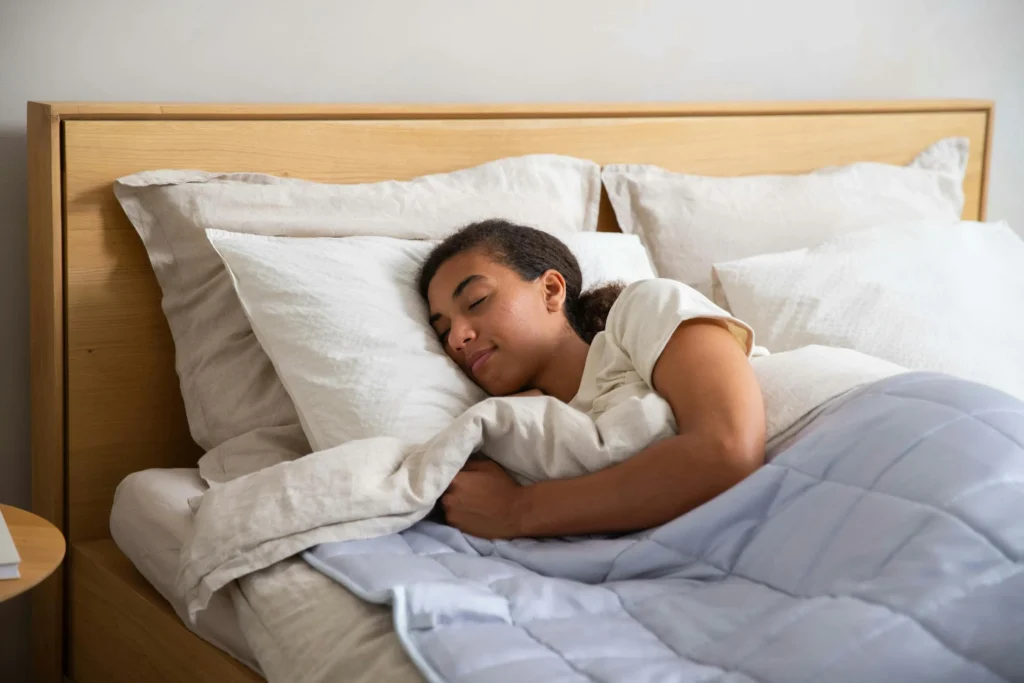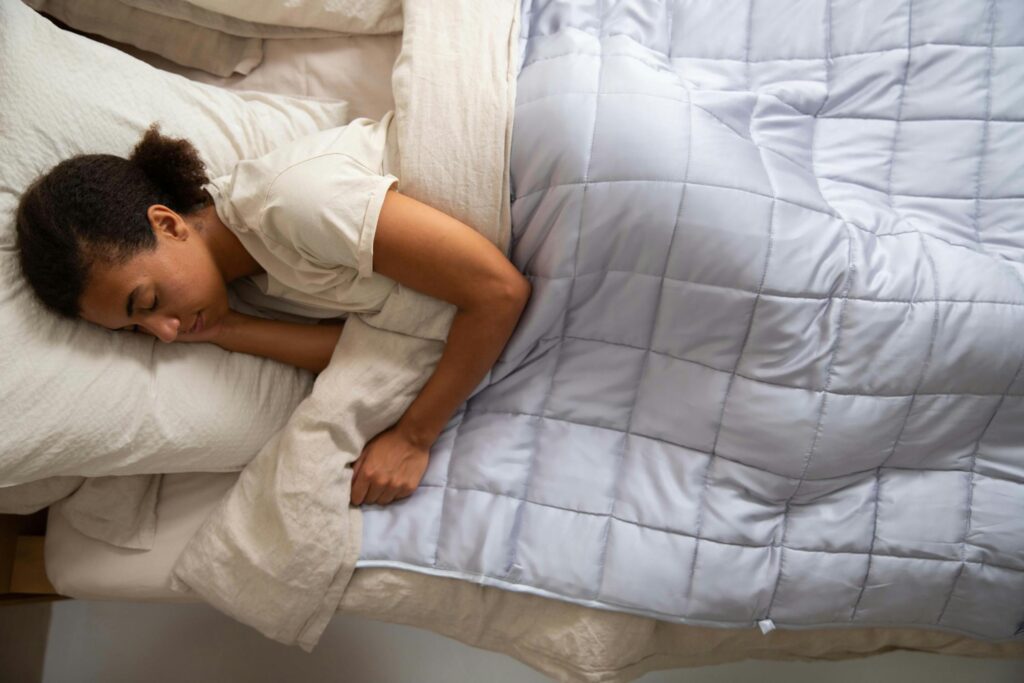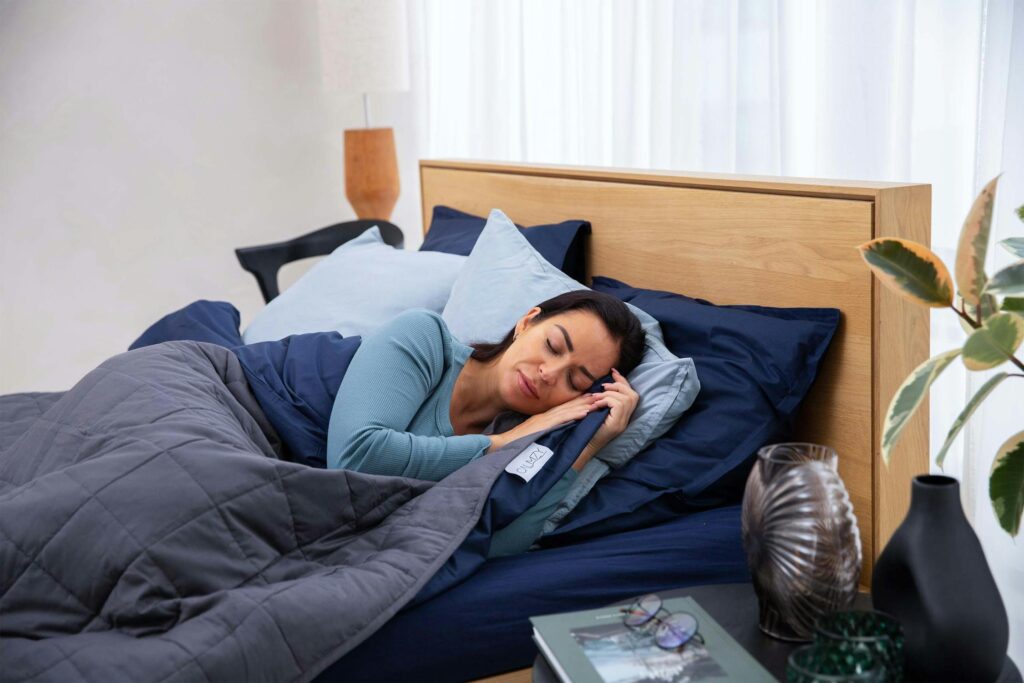Introduction

In recent years, there has been a growing interest in alternative therapies to support individuals with autism spectrum disorder (ASD). One such therapeutic tool that has gained popularity is the use of weighted blankets.
These specially designed blankets, along with their smaller counterparts known as weighted lap pads, offer a unique and calming sensory experience for individuals with autism. In this article, we will delve into the world of weighted blankets for autism, exploring their benefits, variations, and the optimal scenarios for their use.
1. Weighted Blankets
Weighted blankets are a type of therapeutic blanket filled with materials like glass beads or plastic pellets, providing a gentle and evenly distributed pressure across the body when draped over the user. The pressure mimics the sensation of a comforting hug, creating a sense of security and promoting relaxation. The weight of these blankets typically ranges from 5 to 30 pounds, with the choice of weight depending on the user’s body weight.
For individuals with autism, who often experience sensory processing challenges, the use of weighted blankets has shown promise in alleviating symptoms and enhancing overall well-being. The deep touch pressure provided by the blankets can have a calming effect on the nervous system, helping to regulate sensory input and promote a sense of calmness.
2. Weighted Lap Pads
In addition to traditional weighted blankets, weighted lap pads offer a more targeted and portable solution for individuals with autism. These smaller-sized blankets are designed to be placed on the lap, providing a localized pressure that can be soothing for those who may find comfort in a specific area. Weighted lap pads are particularly useful in various settings, such as classrooms or during activities that require sitting, allowing individuals to carry the calming sensation with them wherever they go.
The compact and discreet nature of weighted lap pads makes them a versatile tool for managing sensory challenges in a variety of environments. The focused pressure on the lap area can help individuals with autism maintain better focus and concentration, contributing to improved participation in various daily activities.
3. Positive Benefits

The positive benefits of using weighted blankets for autism are multi-faceted and extend beyond immediate sensory relief. Research and anecdotal evidence suggest several advantages associated with the use of these therapeutic blankets:
- Improved Sleep Patterns: Many individuals with autism struggle with sleep disturbances. Weighted blankets have been found to promote better sleep quality by calming the nervous system and reducing anxiety, ultimately contributing to more restful nights.
- Reduced Anxiety and Stress: The deep touch pressure provided by weighted blankets helps regulate the release of neurotransmitters like serotonin and dopamine, which are associated with mood regulation. This can lead to a decrease in anxiety and stress levels for individuals with autism.
- Enhanced Focus and Attention: Weighted lap pads, in particular, have shown promise in improving attention and focus in various settings. The localized pressure on the lap area can help individuals filter out extraneous sensory stimuli and concentrate on the task at hand.
- Sensory Integration: Weighted blankets support sensory integration by providing a controlled and predictable sensory input. This can be especially beneficial for individuals with autism who may struggle with processing and integrating sensory information effectively.
4. When to Use Them

Understanding when to use weighted blankets for autism is crucial for maximizing their benefits. While these blankets can be employed in various situations, there are specific scenarios where their application may be particularly advantageous:
- During Rest Times: Incorporating a weighted blanket into a bedtime routine or during scheduled rest times can help individuals with autism experience a more calming and restful sleep.
- Stressful Situations: Weighted lap pads can be used during potentially stressful situations, such as academic tasks or transitions, to provide a comforting and grounding sensory experience.
- Sensory Overload: In environments with high sensory stimuli, like crowded spaces or loud events, a weighted blanket can serve as a sensory buffer, helping individuals with autism cope with overwhelming sensory input.
- Self-Regulation: Weighted blankets can be used as a tool for self-regulation, empowering individuals with autism to manage their sensory experiences and emotional states more effectively.
5. Who They Work Best For

Weighted blankets for autism are not a one-size-fits-all solution, and their effectiveness can vary from person to person. However, certain characteristics may indicate who might benefit most from the use of these therapeutic blankets:
- Sensory Sensitivities: Individuals with autism who experience heightened sensitivities to touch, sound, or other sensory stimuli may find the deep pressure provided by weighted blankets calming and regulating.
- Sleep Difficulties: Those with autism who struggle with insomnia, night waking, or other sleep-related challenges may benefit from incorporating a weighted blanket into their bedtime routine.
- Restlessness or Hyperactivity: Individuals who exhibit restlessness or hyperactivity may find the soothing effects of a weighted blanket helpful in promoting a sense of calmness and reducing fidgeting.
- Anxiety and Stress: Weighted blankets can be particularly beneficial for individuals with autism who experience heightened levels of anxiety or stress, as the deep touch pressure may contribute to relaxation and emotional regulation.
Conclusion
The use of weighted blankets for autism represents a promising avenue for enhancing the well-being of individuals on the spectrum. These therapeutic tools, along with their portable counterparts, weighted lap pads, offer a non-invasive and holistic approach to managing sensory challenges and promoting emotional regulation.
As research continues to explore the benefits of weighted blankets for autism, it is essential to recognize the individualized nature of sensory preferences. While many individuals with autism may find comfort and relief from using these blankets, it is crucial to consider personal preferences and responses to sensory input.
In conclusion, the growing popularity and positive outcomes associated with weighted blankets for autism highlight the potential for these tools to become an integral part of a comprehensive approach to supporting individuals with autism spectrum disorder. The comforting embrace of a weighted blanket may not only provide sensory relief but also contribute to improved sleep, reduced anxiety, and enhanced overall well-being for those on the autism spectrum.

